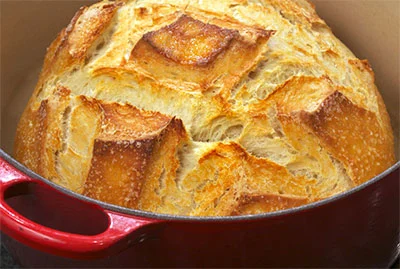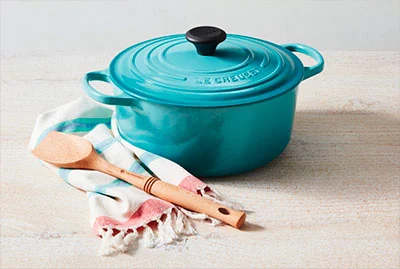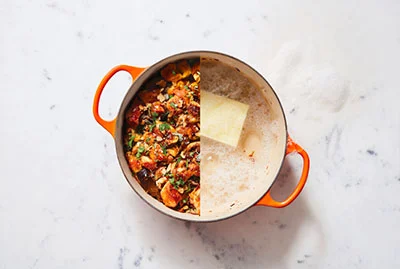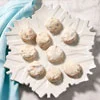No knead Dutch oven bread has been a popular Le Creuset recipe for years, but especially lately as more of us are baking bread at home. The reason why this technique is so popular is because it is amazingly forgiving, and by far the easiest way to make fresh artisan-quality bread at home. The long fermentation time helps create the structure of the bread, and the addition of apple cider vinegar adds a yeasty tang similar to a sourdough. But the real key to this recipe is baking the bread in a Le Creuset enameled cast iron Dutch oven.
Get the Recipe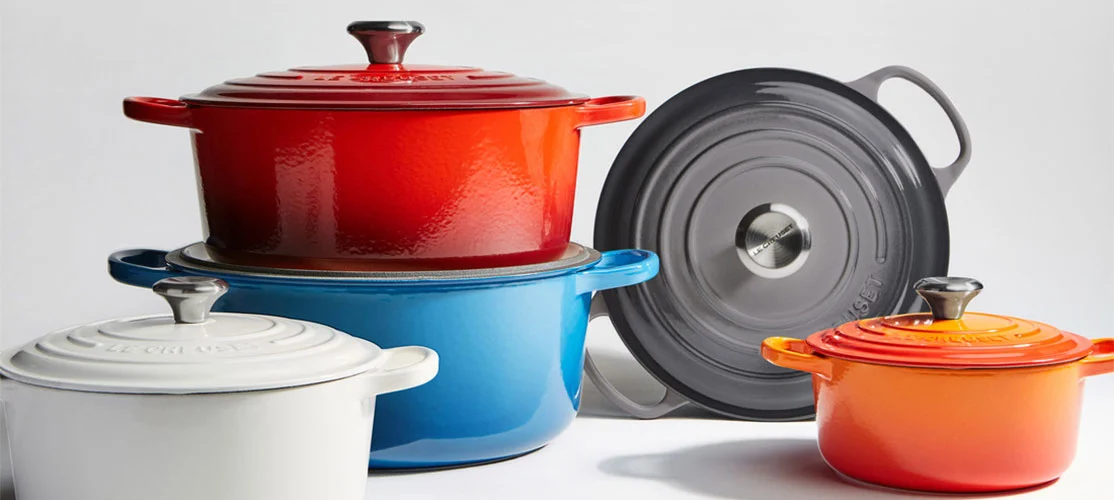
Why Use a Dutch Oven for Baking
A Dutch oven creates an ideal environment for bread baking and simulates a steam-injected oven typically used by artisan bakeries. Steam from the wet dough is trapped inside the heavy pot, and helps the dough to rise and form a loaf that has a crispy crust and tender interior crumb. Le Creuset enameled cast iron is also exceptional at heat distribution and retention to keep the temperature inside the pot more constant than a regular oven, which also helps the baking process.
Most no knead bread recipes call for preheating the Dutch oven while the oven heats up. Not only do we not recommend heating an empty Dutch oven, but it can be challenging to wrangle the wet dough carefully into an extremely hot pot. But we found that preheating is really not necessary to achieve a delicious loaf. The bonus is that you can use the pot itself as a container for the second rise, and it can go directly from the counter to the hot oven when ready to bake. Another technique from America’s Test Kitchen is to place the Dutch oven in a cold oven during the second rise, and preheat both the oven and the pot at the same time.
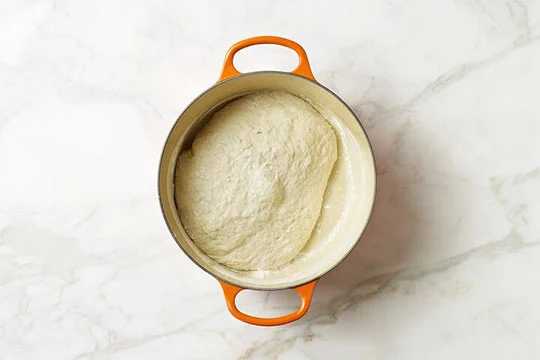
"Use your pot lid to cover the bowl while the dough is rising."
Danielle
Le Creuset Culinary & Product Marketing
Tips from our Kitchen
- You can either use a round or oval Le Creuset Dutch oven. Since the dough is very wet and loose, it will take on the shape and size of the pot as it bakes. So an oval pot will result in more of a traditional oval shaped loaf, while a round Dutch oven will produce a round boule shaped loaf.
- For this recipe you can use either bread flour or all-purpose flour. Bread flour has a higher gluten content and will result in a dryer dough, but the finished loaf will have more structure and will be chewier. A loaf made with all-purpose flour will be softer with a more tender crumb.
- Because of the long slow fermentation, either instant yeast or active dry yeast will work in this recipe. But since it is a small amount of yeast in this recipe, you really need to let it rise at least 12 hours. If you are short on time, you can increase the amount of yeast so that the dough rises faster. Or try this Dutch Oven bread recipe, which uses a stand mixer to knead the dough for a faster rise.
- The water should be at room temperature, around 90-105°F. You want the water to be warm enough to get the yeast going, but not hot enough to kill the yeast. A good test is to feel the water with your hand. Since body temperature is around 98°F, if the water feels slightly warm it is probably in the right range.
- Use your pot lid or a shower cap to cover the bowl while it is rising. Both work well to keep a moist and humid environment for the dough and the bonus is that they are reusable.
- The best way to know when a loaf is done is to take its temperature, which should be around 200°F. The loaf should be golden brown all over, and if you tap the bottom it should sound hollow.
- After removing the loaf from the oven, resist the temptation to cut right into it. Allow the loaf to rest and cool on a wire rack for at least 30 minutes. This will finish cooking the interior of the bread and ensure that the texture will not be gummy upon slicing.
- Once you are comfortable with the basic recipe, try mixing up the ingredients or try different types of flour.


